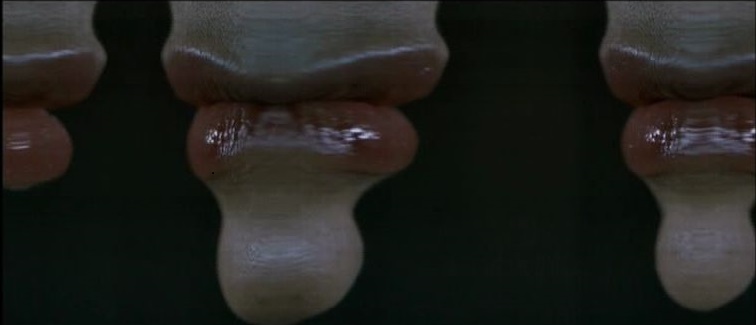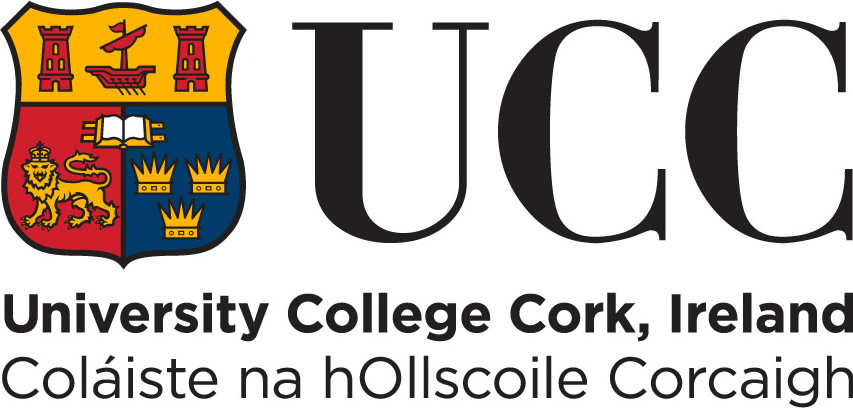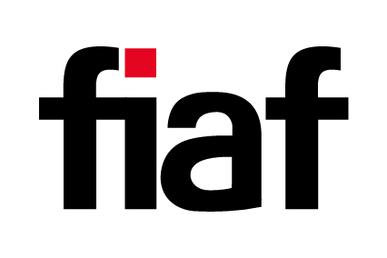Deviate!
Editorial
Jill Murphy and Nicholas O'Riordan
If the Deviate! theme of this Alphaville: Journal of Film and Screen Media special issue is understood in its broadest sense as change and innovation rather than purely as the second part of the norm-deviation couplet that David Bordwell critiques, then, in essence, the task at hand becomes the daunting one of considering what amounts to a by-word for the history of the moving image (27). This broad spectrum of innovation within screen media includes aesthetic, thematic, formal, conceptual, narrative or, even, ethical change. Regardless of the ratio in which the categories above combine, consistent and continual deviations within them have led to the extraordinary evolution of the moving image into its current myriad forms and formats over little more than a century-long trajectory. Indeed, the intrinsic engine of change that gave rise to and continues to drive the moving image—and hence film and media studies—is tacitly acknowledged in the very title of this special issue, the imperative form manifesting the inevitability of constant change.
Prescribing Deviate! as a special theme, however, is not to suggest that to deviate must always be an inherently radical action: deviational change often presents as a slight shift or a series of such shifts and transitions. Hence, the moving image is rethought and reworked incrementally; these small, persistent changes giving rise to new ways of seeing the world, which enhance our understanding of it and often challenge that understanding. Again, as Bordwell identifies, an inherent aspect of this change, whether radical or modest, is the need to forge new concepts (28); as is evident in this special issue, for example, in Marina Hassapopoulou’s application of the term “viewser”—describing the interactive spectator—to what she considers to be a filmic work. Likewise, in his article, Philippe Bédard conceives the “third-person arrangement” to describe the perspective afforded by GoPro cameras attached to but facing back towards the user; such terminology also reflects another change—the effect of new media on our understanding of the moving image as both terms are adapted from the language of video games.
Given the broad umbrella of innovation and change that it shelters under, the Deviate! special issue demonstrates an impressive internal logic, which pervades the six articles presented, regardless of their differing subject matter, theoretical approaches, methodologies and arguments. This logic has two rubrics: the first might be approximated as linked temporal modes and the second as the concept of “strangeness”. The first relates to the connections established between past, present and future, whether in the subject matter discussed or in the arguments put forward. Indeed, inherent in almost all discussions of deviation within the issue is the notion of a trace that refuses to release the deviating element, firmly anchoring it to what it succeeds—either in the recent or distant past, giving rise at times to an almost circular movement that returns the most recent to the earliest; this is the case in the equine imaginary that links the Brony fandom to Eadweard Muybridge’s images in Maria Pramaggiore’s article, and interactive narrative to early “rube” films in Marina Hassapopoulou’s contribution. Meanwhile, Mónika Dánél establishes a connection based on physiognomy and plasticity between the paintings of Giotto and Francis Bacon and the experimental slit films of Sándor Kardos. Sometimes these connections are pre-existing within the films as in Joseph and His Brothers—Scenes from a Peasant Bible (József és testvérei—Jelenetek egy parasztbibliából, András Jeles,2003), the subject of Gabor Gelencsér’s article, in which the ancient forms of shadow puppetry and the folk bible are contrasted with the far more contemporary form of the infrared camera; or in Carmine Amoroso’s Cover Boy (2006), the subject of Abigail Keating’s article, which uses archival footage from key historical events in the latter half of the twentieth century to interrogate the migrant experience in contemporary Italy. Indeed, the notion of reconfiguration itself is central to Keating’s incisive analysis of this film.
In relation to the concept of “strangeness”, all the articles evoke in some respect how the slight or wholesale innovations they discuss, whether formal, narrative, aesthetic or conceptual, lead to a sense of defamiliarisation, predominantly on the part of the spectator, but in Maria Pramaggiore’s article examining the Brony fandom, on the broader level of social media. However, the paradox of this sense of strangeness, as with the notion of unheimlich, is that it is often deeply rooted in the familiar. Frank Kessler, applying Russian theorist Viktor Shklovsky’s concept of ostranenie,or the desire to create a sense of “strangeness”, to film and media history identifies that, in Shklovsky’s original application of the concept to literature, he “roots innovation in tradition. The innovative act then consists mainly in turning to a different tradition, in appropriating forms or devices that may be automatized in their original context, but become both defamiliarized and defamiliarizing when transplanted into another realm” (69; emphasis in original). This act of shifting traditions and conventions is repeatedly evidenced in the articles here, emphasising the significance of the intent to estrange in the works discussed. Moreover, Kessler iterates, citing the work of media historians Tom Gunning, Jay David Bolter and Richard Grusin, and Isabelle Raynauld, how technologies once new but grown familiar acquire a transparency or invisibility, within which content prevails (73–7); we cease to notice them because we take them for granted. Here in this series of articles, as the various authors analyse the new through the lens of the old, or repurpose technologies—and expanding the analogy— theories, styles, forms and formats, we also see these “transparent” entities re-emerge.
From this perspective, a serendipitous coincidence occurs in that this special-themed Deviate! issue is published in the fiftieth anniversary year of the journal’s filmic namesake Alphaville, une étrange aventure de Lemmy Caution (Jean-Luc Godard, 1965), a film that perfectly encapsulates the sense of strangeness, repurposing and linking of temporalities that characterise the articles presented here. The “conceptual brilliance”of Alphaville, une étrange aventure de Lemmy Caution lies in its inextricable linking of the future to the past (Rosenbaum), which, as its director has observed, is at heart “really about the present” (qtd. in Brody 227). This holds true whether we consider the figure of Eddie Constantine’s archetypal 1940’s gumshoe or the reworking of the environs and architecture of a contemporaneous but defamiliarised Paris to create a futurescape that conjures up a European dystopia not so far removed from today’s fortress Europe. Thus in the examination and linking of technologies of different eras and deviating formal approaches to the moving image, each article in its own way pays tribute to the same concepts as does the journal’s namesake, now a half-century old.
The special issue opens with Maria Pramaggiore’s fascinating article, “The Taming of the Bronies: Animals, Autism and Fandom as Therapeutic Performance”, in which she sets out to examine the Brony fandom in terms of the equine, which she argues has been overlooked in previous scholarship, by considering online fandom communities, therapeutic treatment of autism spectrum disorders using horses and the significance of the horse throughout the history of the moving image, and indeed in pre-cinema. She makes the case that the significance of the horse figure in “denaturalising gender boundaries” is due to its liminal capacity to realise both “physical and metaphorical transportation”.
Using a historical survey of late-twentieth-century Hungarian experimental cinema, Gábor Gelencsér’s article “Continuing the Deviating Tradition of Hungarian Experimental Film Art: András Jeles’s Joseph and His Brothers—Scenes from a Peasant Bible” establishes the context within which Hungarian filmmaker András Jeles’s work was produced. Gelencsér considers the influence of the Bélas Balázs Studio and the work of filmmaker and writer Miklós Erdély on Jeles, and how he constitutes “a deviating spirit” in Hungarian cinema. The principal focus of the article is Jeles’s film Joseph and His Brothers—Scenes from A Peasant Bible, which juxtaposes the archaic forms of the folk bible and shadow puppetry with the dystopic futuristic forms of infrared images (in a manner not dissimilar to Alphaville, une étrange aventure de Lemmy Caution).
Figure 1: The Gravedigger (Sándor Kardos, 2010). Inforg Studio, M&M Film, 2010. Screenshot.
In a de facto companion piece to Gelencsér’s article, Mónika Dánél, in “Inf(l)ection of the Medium: Sándor Kardos’s Films in Between Eye and Hand”, also examines the work of a Hungarian experimental filmmaker with a unique vision, who like Jeles uses unorthodox formats to achieve his objective. In this case Dánél examines two films by cinematographer Sándor Kardos, Slitfilm (Résfilm, 2005) and The Gravedigger (A sírásó, 2010), both filmed by means of a slit camera, more normally used for photo finishes in races. Basing her investigation on the Deleuzian concepts of inflection and the fold, Dánél explores the plasticity of the images obtained from the slit camera, particularly in relation to the dynamic of inhuman uncanny set up between face and hand (Figure 1); and—again with an emphasis on the defamiliarised, obtained in this case through slit film images and their connection to traditional plastic arts—how this dynamic resembles the contemporary and quattrocento art of Francis Bacon and Giotto, respectively.
At a time when the subject of migration is predominant in Europe, Abigail Keating’s article “Europe of ‘Others’: Deviations, Mobility and the Construction of Identities in Carmine Amoroso’s Cover Boy” looks at the aforementioned film in terms of its subversion of collective and individual identity and notions of Europeanness. Keating links Cover Boy’s themes to notions of precarity and Zygmunt Bauman’s suggestion of ongoing identity crises at individual, national and pan-European levels.
Philippe Bédard’s article “Disembodied Perspective: Third-Person Images in GoPro Videos” uses a novel approach to examine a novel subject: he presents a technical analysis of GoPro video, focussing in particular on what he terms the “third-person arrangement” or when the camera is turned back on its user, who is fixed in space, yielding images that disorientate and perplex viewers. In addition to the technical approach employed, Bédard considers how these images might be understood in terms of previous theories of film spectatorship.
Finally, Marina Hassopopoulou, in her article “‘Gas Her’: Deviant Paradigms of Identification in Interactive Spectatorship”, looks at a very different form of identification in the controversial Stockholm: An Exploration of True Love (Stanton Audemars, 2008). Hassapopoulou considers how the film’s interactive format implicates the viewer in the acts perpetrated on the fictional victim. She contrasts the participation of the interactive viewer (or “viewser”) with Thomas Elsaesser’s classification of the early cinema “rube” (a hapless individual with an inherent lack of understanding of the new moving image technology and a consequent inability to observe the boundary between spectator and screen). Hassapopoulou’s article might be said to exemplify the characteristics of this issue as outlined above: the narrative “strangeness” encountered by the viewer in making decisions that will negatively impact on the virtual victim in the film is accompanied by an ethical uncertainty, while unexpectedly linking to the viewing experience of early cinema-goers.
The articles above, through the consideration of new and old, of departure and the corresponding arrival it implicitly suggests, provide an intriguing snapshot of contemporary screen media and, we hope, a rich and multi-layered contribution to our understanding of how the moving image slowly shifts and changes to evolve, while always remaining in some way anchored to its antecedents.
References
1. Alphaville, une étrange aventure de Lemmy Caution. Dir. Jean-Luc Godard. Athos Films,
1965. Film.2. Bordwell, David. Poetics of Cinema. Routledge: London, 2008. Print.
3. Brody, Richard. Everything is Cinema. Holt Paperbacks: New York, 2008. Print.4. Cover Boy. Dir. Carmine Amoroso. Paco Cinematografica, 2006. Film.
5. Elsaesser, Thomas. “Discipline Through Diegesis: The ‘Rube’ Film between ‘Attractions’ and ‘Narrative Integration’.” The Cinema of Attractions Reloaded. Ed. Wanda Strauven. Amsterdam: U of Amsterdam P, 2006. 205–23. Print.
6. The Gravedigger [A sírásó]. Dir. Sándor Kardos. Inforg Studio, M&M, 2010. Film.
7. Joseph and His Brothers—Scenes from a Peasant Bible [József és testvérei—Jelenetek
egy parasztbibliából]. Dir. András Jeles. Panoráma Film, 2003. Film.8. Kessler, Frank. “Ostranenie, Innovation and Media History.” In Ostrannenie: On Strangeness and the Moving Image: The History, Reception, and Relevance of a Concept. Ed. Annie van den Oever. Amsterdam: Amsterdam UP, 2010. 61–80. Print.
9. Slitfilm [Résfilm]. Dir. Sándor Kardos. Inforg Studio, 2005. Film.
10. Stockholm: An Exploration of True Love. Dir. Stanton Audemars. Roland Media Distribution, 2008. DVD.
11. Rosenbaum, Jonathan. “The Future Is Here.” Jonathan Rosenbaum.net. Nov. 2014. Web. 28 Aug. 2015. <http://www.jonathanrosenbaum.net/2014/11/the-future-is-here-tk/>.
Suggested Citation
Murphy, J. and O’Riordan, N. (2015) 'Deviate!', Alphaville: Journal of Film and Screen Media, 9, pp. 1–5. https://doi.org/10.33178/alpha.9.00.
Jill Murphy is a postdoctoral researcher in Film and Screen Media at University College Cork. She has published articles, translations and reviews in various journals and edited collections. Her research interests principally focus on the relationship between film and art history, particularly as regards human figuration, and the work of Jean-Luc Nancy with respect to the representation of the body in visual media.
Nicholas O’Riordan is a PhD Film Studies candidate at University College Cork, where he is also an undergraduate tutor in the School of English. Prior to this he completed a BA in English and Geography, and an MA in Film Studies, both in UCC, where his MA thesis was titled “Dublin’s Fair City?: Representations of Dublin City in Contemporary Irish Film”. His research interests include Irish cinema, urban space in cinema, sound and the voice in cinema, and representations of national identity in cinema. He also works as a filmmaker.










